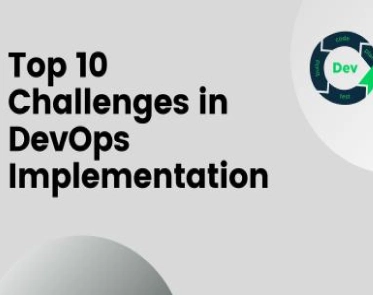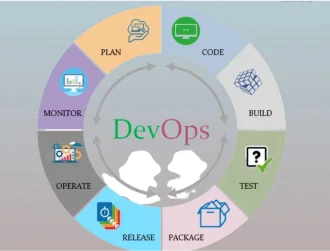Software development in the ever-changing healthcare industry significantly impacts patient care, simplifies operations, and increases overall efficiency. Complex data management, strict regulatory standards, and the need for absolute dependability and security are just a few of the obstacles that developers of healthcare software face.
A Continuous Integration/Continuous Deployment (CI/CD) pipeline is essential for healthcare software developers to overcome these obstacles and maximize productivity. The market size for artificial intelligence in the healthcare industry is projected to increase at a CAGR of 23.5% between 2022 and 2027, or by USD 11.827 billion.
In this all-inclusive guide, we’ll delve into why CI/CD is crucial for healthcare software development and give you the lowdown on developing a CI/CD pipeline perfect for your business.
What is healthcare software development?
There is a tendency to use the words “healthcare” and “medical software” interchangeably. Both work in related but distinct domains. Custom medical software monitors, tracks, and evaluates patients for optimal treatment. Healthcare services, including medical training, information storage, equipment design, diagnostics, and research, are routinely customized to improve quality and efficiency.
Professional healthcare software development (custom services) is connected to various duties vital for addressing challenges within healthcare organizations and promoting good patient-provider interactions. Strong healthcare software connects patients, hospitals, pharmacies, and other healthcare providers to improve patient experience.
Healthcare software development and the significance of CI/CD
-
Improved quality control
Consistently high-quality software is of the utmost importance in the healthcare industry. To find problems and defects early on, CI/CD pipelines allow automated testing at every step of the development process. Ultimately, this improves patient safety and happiness, leading to better software with fewer bugs.
-
Adherence to regulations and compliance
A strong CI/CD pipeline incorporates automated validation and compliance check procedures to reduce the risk of non-compliance and any legal ramifications. This guarantees that software satisfies regulatory criteria before deployment.
-
Shorter time to market
Staying ahead of the competition and meeting patients’ ever-changing requirements requires rapid innovation in healthcare. With CI/CD, software upgrades and functionality may be continuously delivered, allowing healthcare businesses to adapt quickly to changing market needs and lowering time-to-market.
-
Greater cooperation and clearer expression of ideas
CI/CD’s automated workflows and real-time feedback systems, teams working on development, operations, and quality assurance can work together more effectively. Problems are resolved quickly, and projects are executed more smoothly due to this culture of openness and communication.
-
Consistency and Expandability
The healthcare industry is seeing rapid population growth, so healthcare software development must be scalable. CI/CD pipelines guarantee consistent performance and dependability at varied sizes by automating deployment to testing, staging, and production.
Setting up a CI/CD pipeline for healthcare software development
What follows is an outline of the concrete actions needed to establish a CI/CD pipeline for healthcare software development:
-
Requirements and workflow must be defined
Determining the unique needs and workflow of your healthcare software development process is essential before establishing a continuous delivery pipeline. Think about teamwork, testing methods, deployment settings, and regulatory compliance. Your CI/CD pipeline may be easily designed and configured with the help of this documented list of prerequisites.
-
Choose your CI/CD technologies and tools
Make sure you’re using the right continuous integration and continuous delivery (CI/CD) techniques and technologies for software development in healthcare. Jenkins, GitLab CI/CD, CircleCI, and GitHub Actions are common continuous integration and delivery platforms.
Consider each technology’s scalability, integration, compliance, and usability before deciding. To further streamline the deployment and management of healthcare apps, consider using containerization platforms such as Docker and orchestration technologies such as Kubernetes.
-
Collaborating and version controlling
Develop procedures for managing version control using a DVCS like Git. Use Git repositories for collaborative code, configuration file, and documentation management.
To help with concurrent development and feature separation, you may use branching methods like GitFlow. To make it easier for development teams to communicate and stay on top of tasks, integrate project management and problem-tracking systems like Trello or Jira.
-
Testing automation
To guarantee the dependability and quality of healthcare software, use automated testing procedures. The following types of tests are part of this: performance, regression, integration, and unit tests.
A CI/CD pipeline may automate test execution and reporting by integrating testing frameworks like JUnit, Selenium, and Postman. Use cloud-based testing tools to execute tests in parallel across many environments and scale as needed.
-
Ongoing integration
To facilitate continuous integration in healthcare, install a CI server (like Jenkins). Set up build automation such that a build immediately follows changes to the source code.
Set up build pipelines to automate testing, code compilation, and artifact generation (e.g., Docker images, executable binaries). Use SonarQube or CodeClimate, two static code analysis tools, to find vulnerabilities and enforce coding standards early in the development lifecycle.
-
Ongoing rollout
Healthcare software releases and deployments may be automated using continuous deployment pipelines. To supply and configure equipment reliably, get the most out of deployment automation technologies like Ansible, Chef, or Puppet.
Reduce deployment-related delays and dangers by defining deployment techniques like blue-green deployments or canary releases. Incorporate automatic rollback capabilities to restore earlier versions if deployment fails or encounters problems.
-
Incorporate feedback
Incorporate feedback and monitoring into your continuous integration/delivery pipeline to track the status and performance of healthcare apps already in use. Gather and display metrics about application performance, resource use, and user experience with the help of monitoring tools like Prometheus, Grafana, or Datadog.
Set up automatic alerts and notifications to let the right people know when anything unexpected happens in production settings. Utilize analytics data and user input to refine software features and set priorities for future development.
-
Continuous improvement
The iterative nature of CI/CD makes continuous improvement necessary for healthcare software developers looking to maximize efficiency. Retrospectives are a great way to assess the current state of your continuous integration and delivery pipeline and brainstorm ways to improve it.
Getting input from operations, development, and end users is important to better understand the problem and decide which improvements are most pressing. To ensure that your CI/CD procedures are always evolving and adapting, embracing a culture of experimentation and innovation is important.
Features of personalized healthcare software
The specific problems and needs of healthcare organizations may be better met by developing a custom healthcare software solution. The revenue of IoT-based technology solutions in the healthcare sector is projected to increase from $24 billion in 2016 to $135 billion in 2025, according to Statista.
Healthcare providers, patients, and other stakeholders may benefit greatly from bespoke solutions, as opposed to generic software, since they are tailored to their unique requirements. So, let’s have a look at some of the features of personalized healthcare software.
-
Customizable features
Healthcare organizations can gain a lot by using custom-made software to address specific processes, unique workflows, and procedures. They can increase productivity and ensure user pleasure by ensuring the programs are fit for purpose.
-
Security and compliance
There should be compliance for healthcare software development to comply with regulatory laws like GDPR and HIPAA. Specialized solutions may assist the healthcare industry in meeting its security and compliance requirements since the industry has its own standards.
-
Versatility and scalability
While healthcare company demands are dynamic, software development solutions to meet the needs are modified accordingly. Specialized solutions, on the other hand, will allow you to grow and adjust in line with your evolving needs effortlessly, be more patient, or have more services or new features.
-
Improved involvement of patients
Innovative software on personalized healthcare can contain extra features that spur patient engagement, such as mobile apps, telemedicine capabilities, and patient portals. Patient satisfaction and results can be improved through personalized options that make it easier for patients to access their health records, book appointments, and interact with their healthcare providers.
Conclusion
A CI/CD pipeline will be applied to make healthcare software development more efficient and competitive. The healthcare industry can use the CI/CD automation of processes to create high-quality software solutions that will help develop good patient care and achieve good results.
Using this approach and selecting the right tools and technologies, healthcare companies would be able to develop their own continuous integration and delivery pipelines that are not just specific to the particular company but are also flexible enough.








